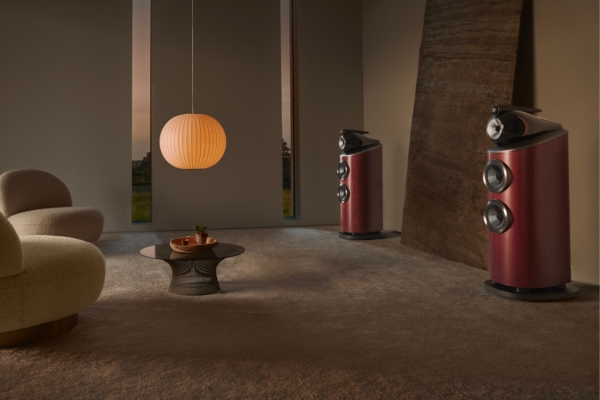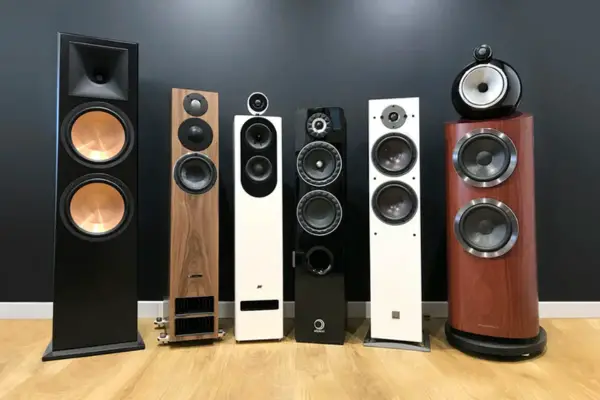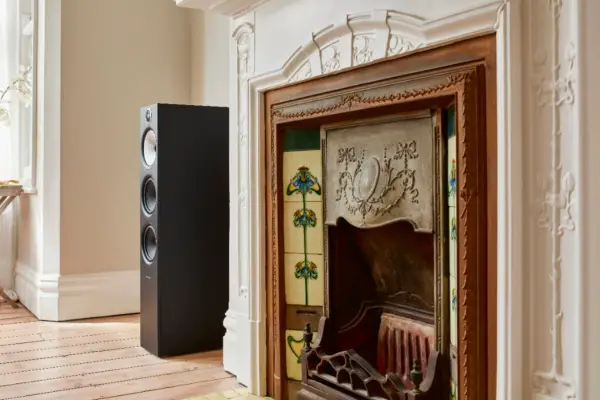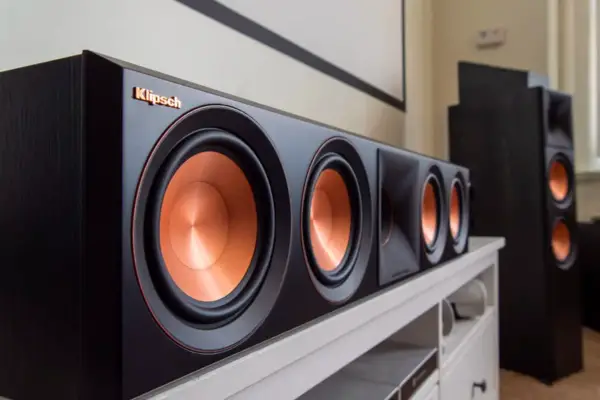Floor Standing Speakers – A Game Changer
What to look for in a floor standing speaker? We all love a good tune or getting lost in the world of movies, right? And there’s nothing like crystal clear sound to make that experience ten times better.
Good quality audio isn’t just about hearing the beats, it’s about feeling every rhythm, catching every note, and being in the moment. But, what really gives you that cinema-like sound at home?
You guessed it – floor standing speakers! AKA, Tower Speakers, these towering wonders have become a top pick for many music lovers and movie buffs. And why not? They pack a punch and deliver crisp notes in a relatively small enclosure.
So, if you’re all about that top-notch audio, keep reading because floor standing speakers might just be the game-changer you’ve been looking for!
What to Look for in a Floor Standing Speaker
Size and Placement
Alright, so you’re sold on the idea of floor standing speakers. But before you jump in, let’s talk about where you’re going to put them. First off, size matters! Your room size and its acoustics play a big role in how your speakers will sound. It’s like trying to fit a giant teddy bear into a small box – doesn’t work, right?
Similarly, cramming massive speakers into a tiny room won’t do you any favors. And the reverse is true too, tiny speakers might seem lost in a sprawling living room.
But it’s not just about size. Spacing and positioning can make or break your sound experience. Just plopping them anywhere won’t cut it. You’ve got to give them some space!
Think of them as performers on a stage, they need their spot under the spotlight. So, make sure they’re not too close to walls or tucked away in corners. And angle them just right so they’re serenading you directly.

Sound Quality
Now, let’s dive into the heart of the matter – sound quality. After all, what’s a speaker without killer sound, right? When you’re out hunting for the perfect floor standing speaker, there are a few key things to keep in mind.
Bass Response: Who doesn’t love feeling the beat? I’m talking deep lows that make your heart thump, a resonance that fills the room, and a punch that you can almost touch. But remember, it’s not just about loud bass, it’s about quality bass that adds depth to your music and movies.
Midrange Clarity: This is where all the magic happens. It’s the vocals of your favorite singer, the strumming of the guitar, and the dialogue in movies. You want clear, distinct, and true-to-life midranges that make every word and note stand out.
High Frequency Detail: No one wants a song or movie to sound shrill or screechy. That’s why crisp highs that are detailed without being ear-piercing are crucial. It’s about capturing those subtle sounds in a song or the rustling of leaves in a movie.
Soundstage and Imaging: Ever close your eyes and feel like you’re in the middle of a concert or a scene from a movie? That’s what a good soundstage does. It gives a 3D audio image that transports you right into the action. And imaging? Well, that’s all about pinpointing exactly where each sound is coming from, like identifying the exact spot a guitar is playing from on that imaginary stage.
Speaker Sensitivity and Power Handling
Alright, let’s get a bit technical, but don’t worry, I promise to keep it light! When you’re diving into the world of floor standing speakers, there are a couple of terms that might pop up quite often: sensitivity and power handling. So, what are these and why should you care?
Sensitivity: Think of sensitivity as a measure of how loud a speaker can get using a certain amount of power. It’s kinda like how some people can shout louder with the same amount of effort as others. A speaker with high sensitivity will give you louder sound using less power. So, why is this important? Well, a speaker with good sensitivity can give you that rich, full sound without needing a super powerful amp.
Power Handling: This is all about how much power, in watts (RMS), a speaker can handle before it goes “I can’t take it anymore!” and starts distorting or, worse, gets damaged. If you’ve got an amplifier that’s super powerful, you want to make sure your speakers can handle that power without blowing out.
So, how do these two relate? It’s all about compatibility between your speaker and your amplifier. If your speaker has high sensitivity, it doesn’t need a lot of power to produce loud sound. But, if you’re pushing it with a really powerful amp, you need to be sure the speaker can handle that power.

Driver Configuration and Technology
Diving deeper into the world of floor standing speakers, there’s this exciting space where tech meets sound: the drivers. If you’ve ever wondered what’s going on inside that speaker cabinet, let’s break it down, but in a fun way!
Tweeters: These are the tiny champs responsible for producing those high-pitched sounds. Birds chirping or the jingle of cymbals – that’s the tweeter’s playground. And now, there are these fancy ones called Beryllium tweeters. Without getting too geeky, Beryllium is a material that’s super light but super stiff. So, it can move really fast without bending, giving you those high notes in all their glory.
Mid-range Drivers: These are your all-rounders. They take care of the sounds in the middle – think vocals or a guitar solo. They make sure you hear every word in a song or every dialogue in a movie crystal clear.
Woofers: They’re all about that bass! They handle the low-end sounds, giving depth and punch to your audio. It’s the woofer that vibrates your environment and makes you feel the beat in your chest.
Crossover Design: This is like the conductor in an orchestra, making sure each instrument (or in this case, driver) plays its part at the right time. A well-designed crossover ensures that each driver handles the frequency it’s best at, so you get a seamless, balanced sound.
Now, as with everything tech, there are always innovations on the horizon. Apart from Beryllium tweeters, there are other advancements like magnetic driver technology, improved cone materials, and so on. The world of audio tech is ever-evolving, and that’s what makes it so thrilling.
Cabinet Design and Build Quality
Alright, let’s delve into the aesthetic charm of the floor standing speaker – its cabinet. Given its prominence in room decor, the design of a floor standing speaker holds even more weight than other speakers.
But the cabinet isn’t only about showcasing the beauty of its components, it also plays a pivotal role in their performance. Think of it as a balance of art and science, where design meets sound.
Firstly, ever tapped on something and heard it echo or ring? That’s resonance. And when it comes to speakers, you don’t want the cabinet doing its own dance while the music is playing. This is why Non-resonant Cabinets are a big deal. They ensure that all you hear is the music, and not any added noise from the cabinet itself vibrating or resonating.
Then, there’s the material game. Most cabinets are made from Wood or MDF (Medium Density Fiberboard). Wood, with its natural properties, can add warmth to the sound. MDF, on the other hand, is dense and consistent, which is great for a stable, resonance-free environment. But it’s not just about the type of material, but also its thickness and how it’s put together. All these factors can influence the sound in subtle ways.
But hey, while we all love great sound, we also want our speakers to look good, right? That brings us to the fun part – Aesthetics. Today’s floor standing speakers come in a variety of finishes, from sleek glossy black to rustic, classic wood grains. You’ve got shiny metallic accents, minimalist designs, retro vibes, and so much more. It’s like shopping for the perfect piece of furniture that not only complements your room but also serenades you with incredible sound.

Connectivity and Compatibility
Alright, so we’ve gushed over the sound and admired the beauty of the cabinet, but now let’s talk about getting things connected. How your speaker connects to your sound source is a vital part of the puzzle. It’s like choosing between wired headphones and Bluetooth ones, each has its pros and cons.
First off, Wired vs. Wireless. Old-school purists might lean towards wired options, and there’s a reason for that. Wired connections often guarantee a consistent and lossless transmission of sound. It’s direct, and there’s no fear of interference. But, let’s be real, wires can be, well, messy.
Enter wireless floor standing speakers. They’re all about convenience. No clutter, no fuss. And with advances in tech, the sound quality gap between wired and wireless has shrunk considerably. So, it’s all about what floats your boat – purity of sound or a clean, wire-free look.
Now, let’s get a bit technical again: Impedance. Think of impedance as resistance, but for audio circuits. Why should you care? Because it’s essential for compatibility between your speaker and amplifier.
Both your speaker and your amp have an impedance rating (like 2 ohms, 4 ohms, 8 ohms, etc.). For the best performance and to keep your gear safe, you want these numbers to match or at least be compatible.
Last but not least, there’s Bi-wiring and Bi-amping. These aren’t dance moves, promise! Bi-wiring is when you use two separate sets of cables for the high and low frequencies, which can potentially reduce distortion.
Bi-amping, on the other hand, uses two separate amplifiers: one for the highs and another for the lows. This can give more power and control over your sound.
Not all speakers support these options, but if they do, and you’re all about squeezing every bit of performance out, they’re worth considering.

Brand Reputation
When shopping for floor standing speakers, the brand can tell you a lot. Established brands often have a legacy of quality and innovation, but it’s not just about the name, it’s about what’s behind it. A good brand will often offer stellar after-sales service, ensuring that if you run into any hitches, they’ve got your back.
Price and Value
Now, let’s talk money. We’ve all heard the saying, “You get what you pay for,” but in the audio world, it’s a tad more complex. There’s a crucial difference between Price and Value. Price is what you pay, but value? That’s what you get for what you pay.
Finding that sweet spot, where your budget meets your needs without missing out on essential features, can feel like striking gold. It’s all about balance. Maybe you don’t need the speaker with all the bells and whistles, but you don’t want to skimp on core sound quality either.
And here’s a golden nugget of wisdom: A higher price tag doesn’t always mean better sound quality. Sometimes, it might be about branding, aesthetics, or additional features. So, do your homework, trust your ears, and remember that the best speaker for you is the one that delivers the sound you love at a price that feels right.
What to Look for in a Floor Standing Speaker
We’ve ventured deep into the world of floor standing speakers, exploring everything from the nitty-gritty of sound quality to the fine balance between price and value.
Remember:
- Your room’s size and acoustics play a big role.
- Sound quality encompasses bass, midrange, highs, and the speaker’s imaging.
- The tech inside, like driver configurations and connectivity options, truly matters.
- Established brands can offer peace of mind, but always keep an ear out for user reviews.
- Price doesn’t always equate to performance. Look for value that aligns with your needs.

I am a passionate and skilled car audio enthusiast with 15 years of experience in the industry. My journey started when I replaced my first set of factory car speakers, sparking a deep love for high-quality sound. Since then, I have worked as a representative for renowned brands like Kenwood and Alpine.
With a background in both retail and distribution, I have developed a comprehensive understanding of the car audio market. Currently a certified (MECP) installer in the Mobile Electronics industry, my expertise lies in delivering top-notch audio installations. My knowledge, coupled with my genuine passion, makes me the go-to professional for all car audio needs.

